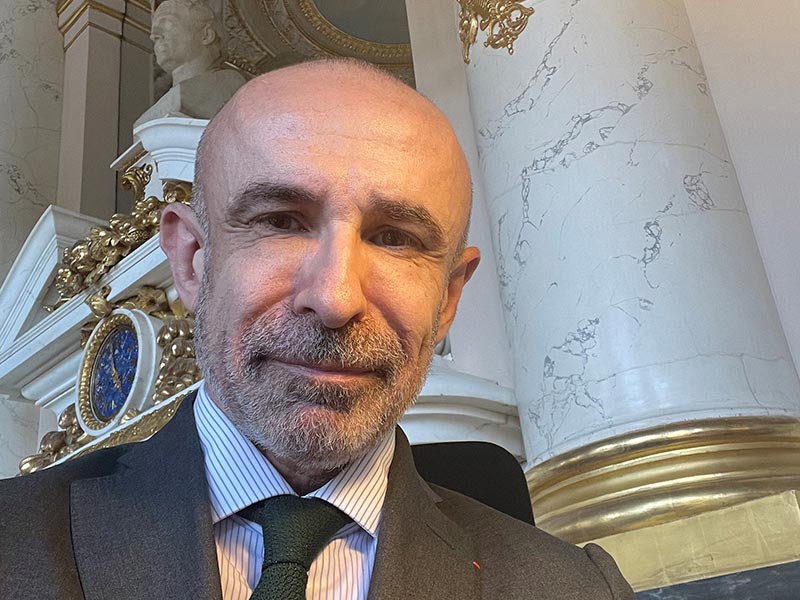Polytechnician, enarque, graduate of Sciences Po, he knows the cultural sector particularly well, he was notably the Education and Culture advisor to Jacques Chirac then President of the Republic.
The Center Pompidou experienced a new episode of strike, how do you explain it?
I don’t know any more than what I read in the press: the staff are worried about what will become of them during the closure and upon reopening, and say to themselves “we are planning a bad thing for them”. It is true that everyone keeps in mind that we tried to take advantage of the Center’s closure for works between 1997 and 2000 to outsource security. But the employees went on strike for a few days, strategically threatening to block the reopening on January 1, 2000, and the project, which was, I believe, an idea of the general manager, was shelved. Jean-Jacques Aillagon was able to reopen the Center, which had been profoundly transformed following essential work.
The Center Pompidou is on strike more often than other museums. Is this due to the status of its agents?
In part. Reception agents and security agents are contract workers specific to the Center Pompidou. The security and surveillance functions of the rooms are entrusted to different categories of agents, and the fire safety agents do not report, as in the other Parisian national museums, to the Paris Fire Brigade, which are themselves , soldiers who never go on strike. It only takes one or two firefighters and a few other agents to go on strike for the Center to be closed and the other agents to be sent home, while a strike fund can compensate the strikers. That said, I would like to point out to you that under my presidency, after the large and understandable strike of 2009 linked to the application of brutal job cuts, the Center no longer experienced, until my departure in 2015 , only one day closed due to strike.
You yourself have had work carried out in the Center. Which ?
When I took over as president in 2007, the Center had experienced two major waves of work, but neither had made it possible to address the problems that are not visible, such as energy performance (the Center is classified as “G”, the worst rating in the field), the renewal of certain devices such as the caterpillar and asbestos removal. I was able to carry out a first phase of work which consisted of replacing the air conditioning system, that is to say the air handling units located on the roof and in the basement, and installing pumps much more efficient heat pumps which reduce energy bills. We carried out this work, without closing the Center. It is true that this concerns spaces which are not open to the public. Over the years, part of the exterior glass facades have been gradually renewed. I then made the decision to replace “the caterpillar”, again without closing the Center, which was the most complex operation, and my successor, Serge Lasvignes, carried it out perfectly by keeping the Center open. . What remains today is the asbestos removal which we could not plan at the time due to the cost, which was estimated at around 230 million euros, if my memory serves me correctly.
Can you specify which areas are affected by asbestos removal?
I would like to start by reminding that there is no friable asbestos that can cause asbestos dust, so there is no risk to staff and visitors. There is asbestos mainly in three places. On the one hand, in the “mixing boxes”, which are elements the size of a large shoebox, which are used to mix the cold and hot air flows so as to obtain the temperature and humidity that we want in the desired location. There are about 500 of them in the ceilings. It is therefore necessary to close the room where they are located, isolate the area, install scaffolding and replace them with a similar, more modern system. It is entirely possible to carry out these replacements on an open site.
Then, there are what we call fire dampers which are asbestos-containing elements which are located at the level of the passages of electrical ducts or pipes between two fire compartments. You have to replace them one by one, we know how to do it but there are hundreds, even thousands of them. It’s a big job, but again we can do it in rotation in order to keep the Center open.
Finally, there are the glass facades, which are double glazed and have asbestos seals. Here again, we considered it possible to replace them without closing the Center and the fact is that we very regularly replace elements when they become broken.
If I understand you correctly, we could have carried out this work perfectly by keeping the Center open?
In any case, I would have attached myself to the gates of the Ministry of Culture if necessary in order to keep the building open to carry out this work during my presidency! It is obviously longer, more expensive by around 15%, it is not pleasant for the staff and visitors, because this work is inconvenient. But overall, the disadvantages are less than for a complete closure. When it reopened in 2000, after two years of work, it was estimated that the Center had lost 1 million visitors. Certainly the caterpillar had entered “under customs” [accès payant, NDLR], but it’s huge. We then changed the statistics on the number of visitors, counting in particular staff entries via what we call “block H”, in order to mask this loss. I decided to stop giving this figure which made little sense. We also took advantage of this work to replace the staff canteen with the Le Georges restaurant.
Why did the State and the current president of the Center then take the decision to close it?
I don’t know. The only thing I can say is that when I worked on this file, my colleagues assured me of the possibility of keeping the Center open to carry out the work I spoke about. There may be other work that I don’t know about that remains to be done, other considerations that come into play… There is a real need for transparency on this subject, because for the moment no one understands this closure and it fuels all the fantasies about possible hidden motives.
The Center Pompidou is facing a real space problem. What would you do to resolve this problem?
The use of bus parking that I believe the current president of the Center is promoting is a very good idea. I’m not sure it’s up to the challenge. Why not start from a simple principle: remove from the Piano and Rogers building everything that is not open to the general public? At the Public Information Library (BPI), the offices of the collection managers occupy a good third of the space, or around 2,000 m². We can also move the Kandinsky library, which is only open to researchers, and the graphic art cabinet outside. There would be a perfect place for this: the beautiful building that the establishment owns and which the BPI offices occupy next to the Stravinsky fountain. We could even connect it to the Center by a footbridge! I’m sure Renzo Piano would come up with a very elegant solution.
Are you happy in the Council of State?
It is a “caring” house, relations with colleagues are friendly. I feel like I’m doing useful work there and the variety of files is incredible and very stimulating.







